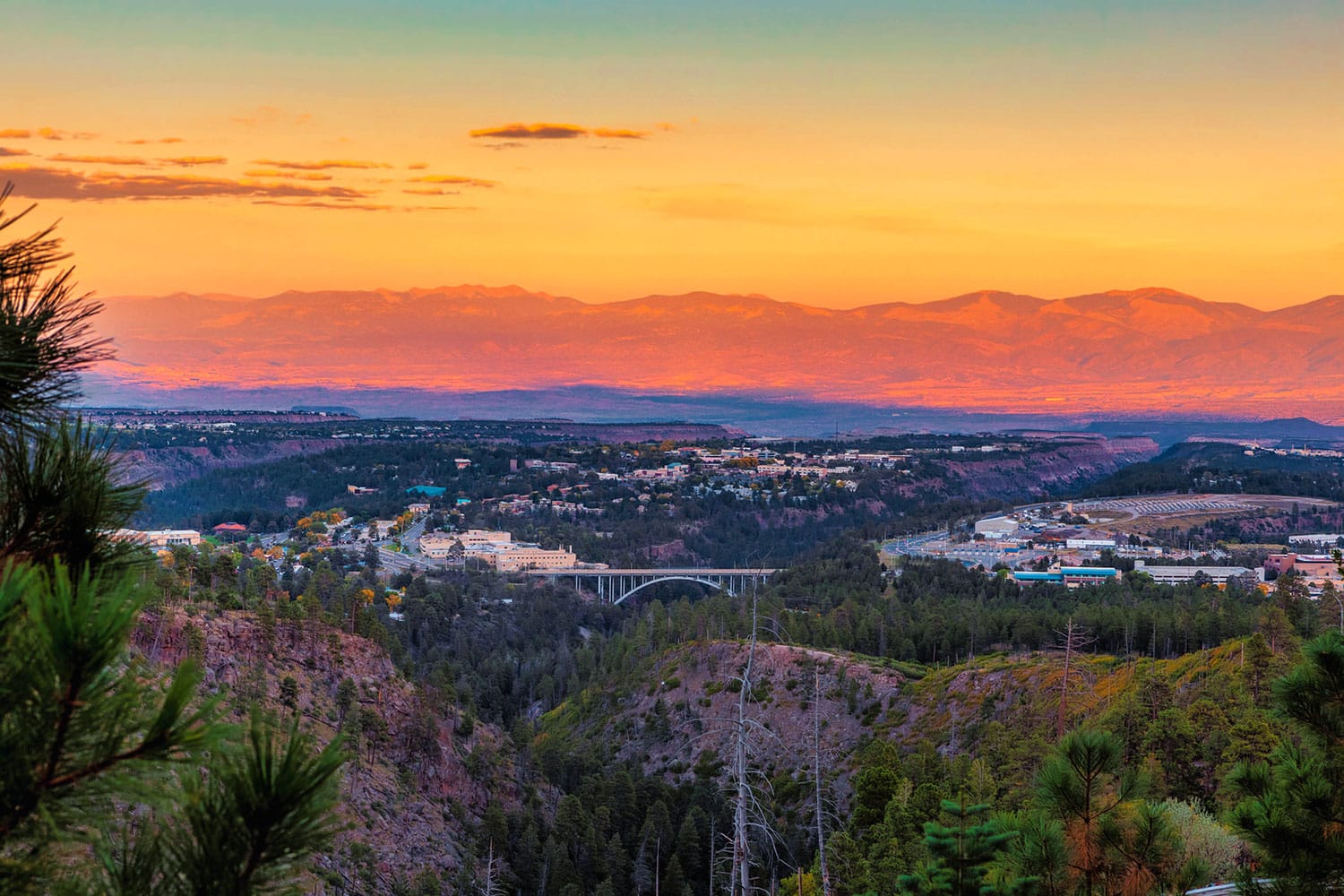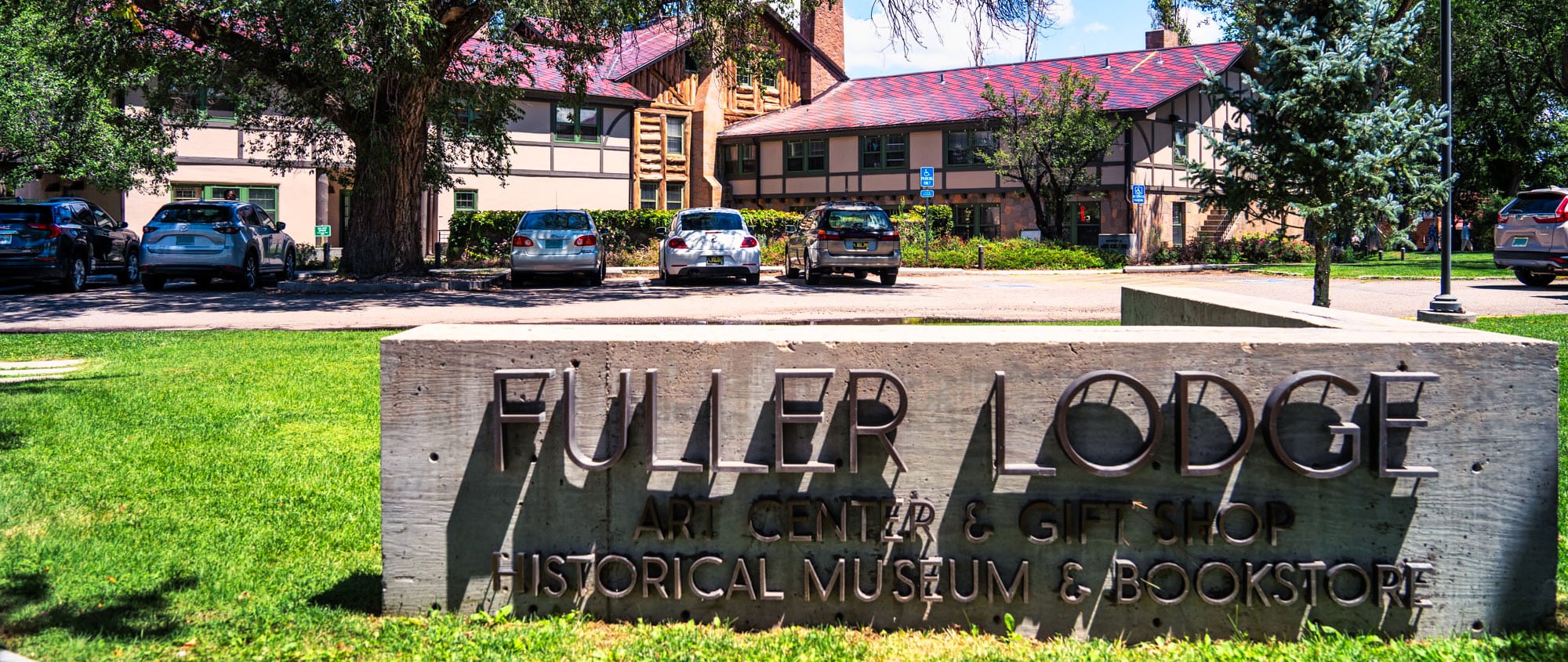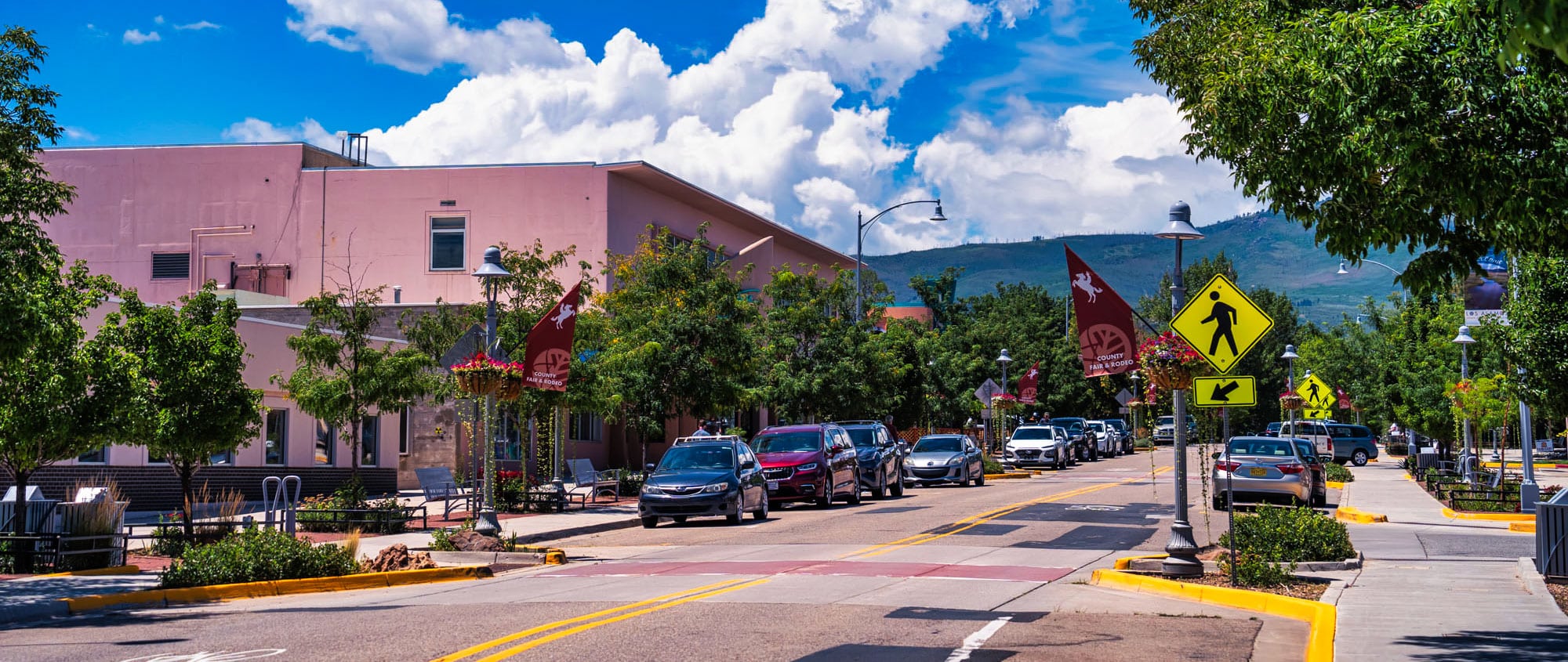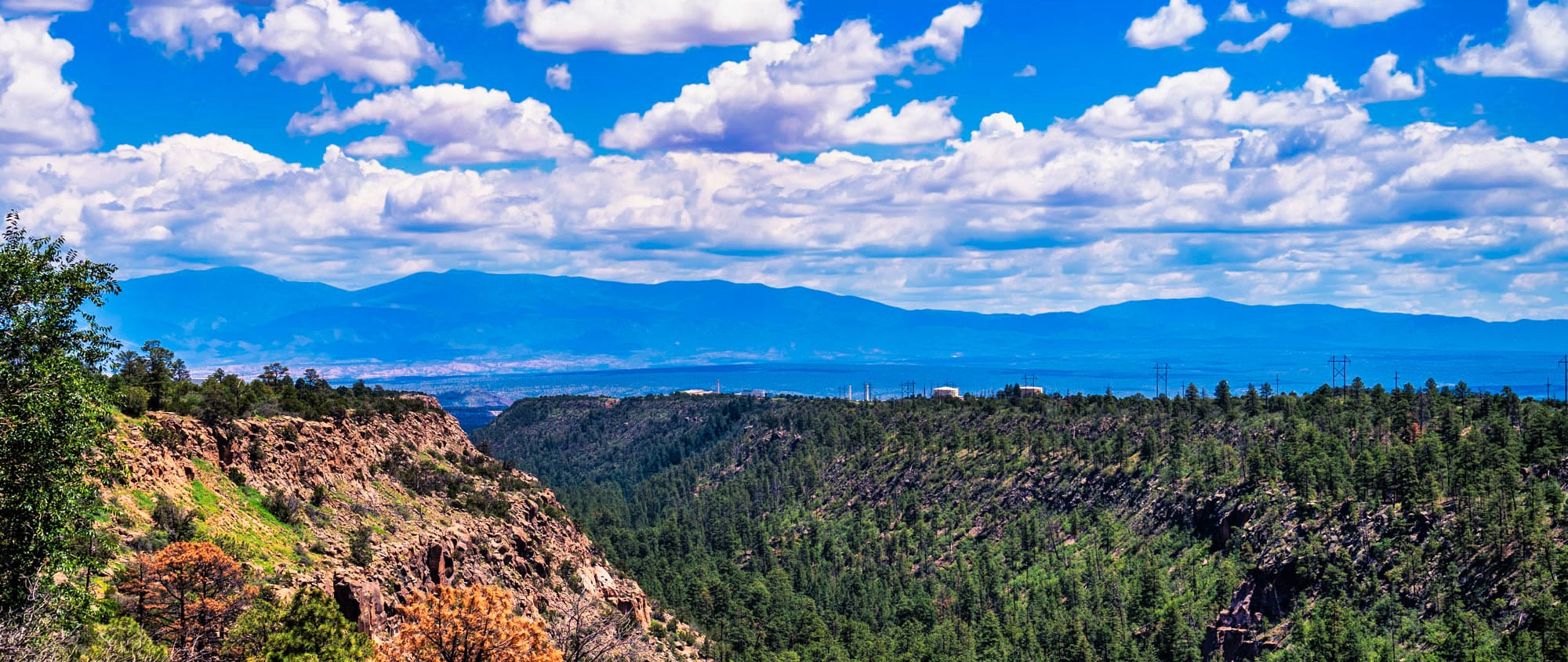
Are you going to like working or living here? We think so. There’s a lot to love about Los Alamos. Beautiful scenery, no traffic, and an easy jaunt to and from Santa Fe. But it’s up to you to get to know Los Alamos and find out what this town has to offer. Here’s what you need to know about living in Los Alamos.

Although Los Alamos is known as the birthplace of the atomic bomb, the area has a centuries-long history that begins with Native American settlement.
Los Alamos has been populated since at least the tenth century when Native Americans lived on the plateaus. By the 1300s, Tewa settlers from the Four Corners Region built the first villages in the area.
New Mexico is the land of living history, so if you head out to the Bandelier National Monument or the Puye Cliffs and you’ll be able to spot the remains of some of those Keres and Tewa towns.
Modern Los Alamos dates back to the late 1800s and early 1900s when the area was a popular spot for homesteaders. Folks would build log cabins to stay in during the summer in order to tend their livestock.
By 1917, Detroit businessman Ashley Pond II built the Los Alamos Ranch School, which operated as a boys’ school modeled after the Boy Scouts of America program.
In 1942, Los Alamos changed the future. That’s when the United States Army bought the Los Alamos Ranch School and surrounding land in the top-secret effort known as the Manhattan Project. At that time, Los Alamos was known as Project Y, the site of a secret laboratory where more than 6,000 scientists and support staff worked to design and build the world’s first atomic bombs. The location was a total secret. Its only mailing addresses were post office boxes in Santa Fe.
The world learned about the existence of Project Y after World War II. The Los Alamos laboratory became Los Alamos Scientific Laboratory in 1947. It was renamed Los Alamos National Laboratory in 1981.
By 1970 Los Alamos had built up a strong population and became, more or less, the town it is today, a little city right on the edge of Santa Fe.
For more about Los Alamos history, check out these resources:


Join our community of buyers and sellers and subscribe to our Monthly Newsletter to receive Santa Fe community and real estate news delivered right to your inbox.

530 S. Guadalupe Street
Santa Fe, NM 87501
Phone: (505) 982-9836
All real estate advertised herein is subject to the Federal Fair Housing Act and Equal Opportunities Act. Barker Realty Co., llc. strives in to confirm as reasonably practical all advertising information herein is correct but assumes no legal responsibility for accuracy and should be verified by Purchaser. Barker Realty Co., llc. is not responsible for misinformation provided by its clients, misprints, or typographical errors. Prices herein are subject to change. Square footage amounts and lot sizes are approximates. The data relating to real estate for sale in this web site comes in part from the Internet Data exchange (“IDX”) program of SFAR MLS, Inc. All data in this web site is deemed reliable but is not guaranteed. © 2022 Southwest Multiple Listing Service, Inc. All rights reserved. Internet Data Exchange (IDX) listings are from Southwest Multiple Listing Service, Inc. (SWMLS). IDX information is provided exclusively for consumers’ personal, non-commercial use and may not be used for any purpose other than to identify prospective properties consumers may be interested in purchasing. All information is deemed reliable but is not guaranteed accurate by SWMLS. Built by the Barker Realty Marketing department.